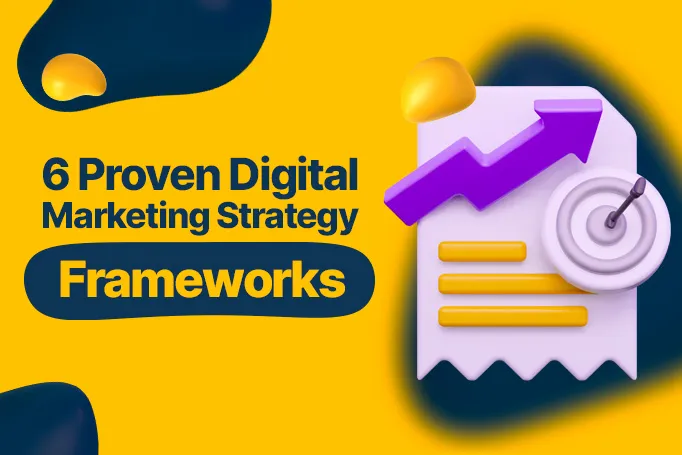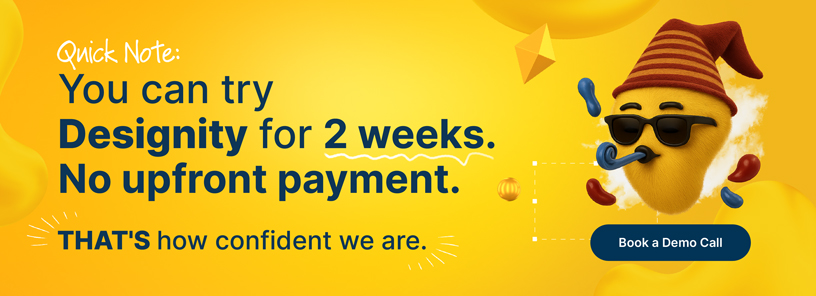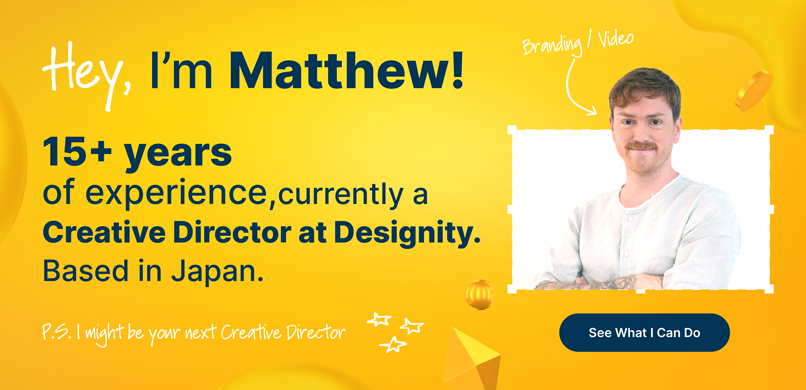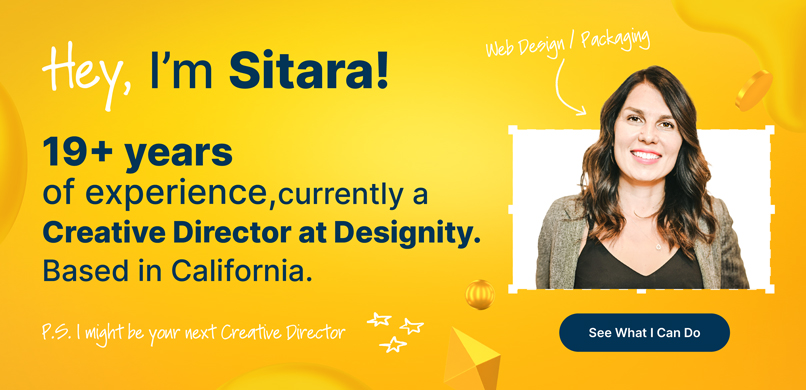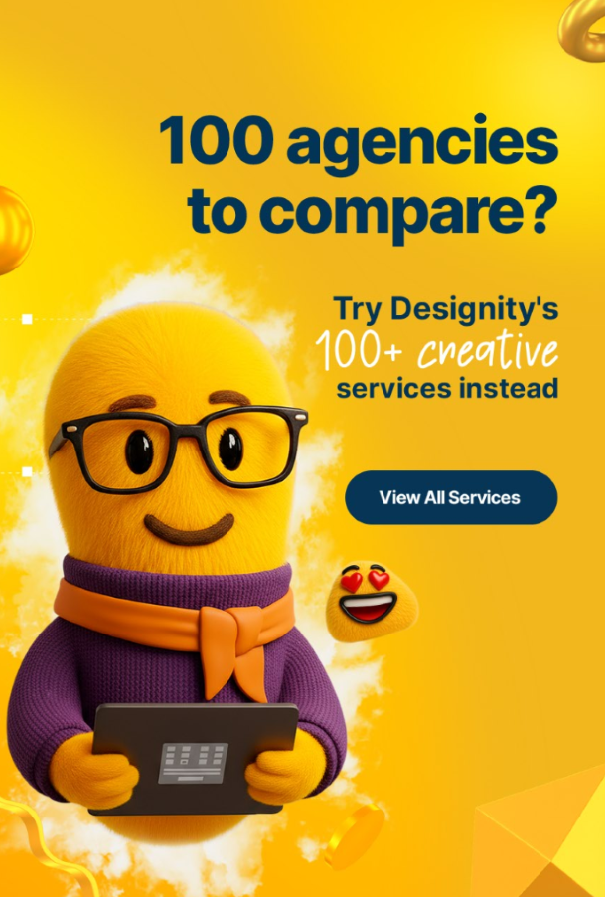If you’re the owner of a small business (or a large one for that matter) you don’t just want to plod along and keep pace with your competitors … you want to stay one step ahead!
And in order to do that you’re going to have to market yourself successfully in order to continuously draw in new customers and drive sales. This is where a time-tested and well-crafted digital marketing strategy can come into play.
But digital marketing is a fickle beast and to save time and money, sometimes you just need something that works, a proven method that not only keeps you up to date with industry trends but sets you apart from the pack.
Sometimes you need a proven digital marketing strategy framework to act as a roadmap to your success!
A quick Google search will tell you that there are several proven frameworks out there. So, which one is right for you?
If you’re not sure, we’ve got what you need to help you decide! Today’s blog is bringing you 6 proven strategies that aren’t meant to just keep you in the race but position you as the leader of the pack!
What is a Digital Marketing Strategy Framework?
A digital marketing strategy framework is a structured and systematic approach to planning, launching, and managing your digital marketing efforts.
It’s the roadmap that helps businesses achieve their marketing goals by providing a solid-as-a-rock foundation for your strategies, outlining the key components, stages, and considerations you need for effective digital marketing.
Not all frameworks are the same, but here are some common elements you’ll see throughout:
- Goal Setting — Clearly defining measurable and achievable objectives that align with overall business goals.
- Target Audience Identification — Understanding and defining the specific audience segments that the digital strategy aims to reach.
- Market Research — Conducting research on industry trends, competitor activities, and consumer behavior to better tailor your strategies.
- Digital Channels and Tactics — Identifying the most relevant online platforms and tactics to reach and engage the target audience. This can include social media, content marketing, SEO, email marketing, and more.
- Content Strategy — Developing a plan for creating, distributing, and optimizing content that resonates with the target audience and supports your overall marketing goals.
- Budget Allocation — Allocating resources and budget to all of your digital channels and tactics based on their effectiveness and your goals.
- Performance Metrics and Analytics — Selecting key performance indicators (KPIs) and implementing analytics tools to measure the success of the digital marketing efforts.
- Testing and Optimization — Incorporating a process for testing different strategies and optimizing campaigns based on performance data.
- Integration with Overall Business Strategy — Ensuring alignment between the digital marketing strategy and the broader business strategy for a cohesive and unified approach.
- Continuous Evaluation and Adaptation — Regularly reviewing the strategy's performance, learning from results, and tweaking your approach.
Why Your Marketing Needs a Proven Framework

A proven framework for your business provides a structured and strategic approach to various aspects of your operations, including marketing.
Here are several more ways a proven framework can benefit your business and streamline your marketing processes:
- Guidance and Direction — A framework serves as a roadmap, offering clear guidance and direction for your business activities. It helps you navigate the complexities of decision-making by providing a structured approach.
- Efficiency and Effectiveness — Proven frameworks are designed based on best practices and successful strategies. By leveraging these frameworks, you can streamline your processes, making your business operations more efficient and effective.
- Consistency — Frameworks ensure consistency in your approach. This is crucial for building a cohesive brand identity, delivering a consistent customer experience, and maintaining a unified strategy across different areas of your business.
- Goal Alignment — A well-designed framework helps align your activities with your overall business goals. This ensures that every effort contributes to the overarching objectives, making your business more purposeful and goal-oriented.
- Risk Mitigation — Frameworks often include risk assessment and management components. By following established processes, you can identify potential risks early on and implement strategies to mitigate them, reducing the likelihood of setbacks.
- Scalability — Proven frameworks are scalable, meaning they can adapt to the growth of your business. As you expand, the framework provides a foundation that can be adjusted and extended to accommodate new challenges and opportunities.
- Learning from Success and Failure — Frameworks are often developed based on lessons learned from both successes and failures in various industries. By adopting a proven framework, you benefit from the collective wisdom and experiences of others, avoiding common pitfalls.
- Resource Optimization — Efficient use of resources is crucial for business success. A framework helps optimize resource allocation, ensuring that time, budget, and manpower are utilized effectively to achieve maximum impact.
- Adaptability to Change — The business landscape is dynamic, and change is inevitable. A proven framework is designed to be adaptable, allowing your business to respond effectively to market shifts, technological advancements, and other external factors.
- Customer Satisfaction — A consistent and well-implemented framework contributes to a positive customer experience. When customers can rely on a business that operates cohesively and efficiently, it builds trust and satisfaction.
Overview of Proven Digital Marketing Strategy Frameworks
So, if you’re sold and it’s tried and true methods you’re looking for to elevate your business, then here are 6 very popular frameworks to choose from.
Take a look and see which works best for you, your customers, and your business!
1. The RACE Model
The RACE Model is a popular framework used by many successful businesses.
It’s a cyclical process that emphasizes the importance of continuous improvement and refinement based on your performance metrics and customer feedback.
It goes a little like this:
- Reach — This phase involves reaching your target audience through various channels, both online and offline. It includes activities such as advertising, content marketing, social media, and search engine optimization (SEO) to increase visibility and attract potential customers.
- Act — Once you've reached your audience, the next step is to encourage them to take action. This could involve interacting with your content, signing up for newsletters, or engaging with your social media posts. The goal is to turn passive viewers into active participants.
- Convert — Conversion is the critical phase where you persuade your audience to take a specific desired action, such as making a purchase, filling out a form, or subscribing to a service. This phase often involves optimizing landing pages, providing compelling calls to action, and ensuring a smooth user experience.
- Engage — The engagement phase is about building a long-term relationship with your customers. This includes post-purchase communication, customer support, and ongoing engagement through content, social media, and other channels. The goal is to turn one-time customers into repeat customers and advocates for your brand.
In a nutshell, businesses use the RACE model as a guide to reach their target audience and encourage them to act, convert interest into action, and foster ongoing engagement.
2. Marketing Mix
The marketing mix requires businesses to put their focus on certain areas as they plan their marketing efforts.
Also known as the 4 Ps of marketing, this framework helps marketers keep their focus on the things that really matter and make more strategic decisions when launching new products or revising strategy.
Here’s a closer look at those 4 Ps:
- Product — This refers to the products or services that a company offers to its customers and involves decisions related to that product design, features, quality, branding, and packaging.
- Price — Pricing involves determining the cost of the product or service and setting a fair price that turns a profit and that customers are willing to pay. Pricing strategies can include cost-based pricing, value-based pricing, penetration pricing, skimming pricing, etc.
- Place — Also known as distribution, this element focuses on how the product or service is made available to customers. It includes decisions related to distribution channels, logistics, inventory management, and retail locations.
- Promotion — Promotion involves the communication strategies used to inform, persuade, and remind customers about the company's products or services. This might be advertising, public relations, personal selling, sales promotions, or other promotional activities.
The marketing mix provides a framework for businesses to create a comprehensive marketing strategy. The successful combination of these four elements allows companies to meet the needs of their target audience and gain a competitive advantage in the marketplace.
3. Forrester’s 5 Is
Forrester’s 5 Is is another comprehensive framework that businesses use to enhance their digital marketing strategies.
This framework is so named because it follows the following 5 principles (all starting with the letter “I” if you’ve noticed the trend).
- Idea — Begin by ideating and brainstorming creative concepts for your digital marketing campaigns. Generate innovative ideas that align with your brand message and resonate with your target audience.
- Interaction — Focus on creating interactive experiences for your audience. Develop content and campaigns that encourage engagement and interaction, fostering a deeper connection between your brand and your customers.
- Integration — Ensure seamless integration across all your digital channels. Coordinated efforts and consistent messaging enhance the overall impact of your digital marketing strategy, providing a unified experience for your audience.
- Impact — Evaluate the impact of your digital marketing initiatives. Use key performance indicators (KPIs) and analytics to measure success, understand what works, and identify areas for improvement.
- Innovation — Embrace innovation as an ongoing process. Stay ahead of industry trends, adopt new technologies, and continuously evolve your digital marketing approach to remain competitive and relevant.
By following these 5 guidelines, companies are able to elevate their digital marketing strategies to stay ahead and drive their business!
4. McKinsey 7S

If you’re a business looking to align and optimize your internal elements for success, the McKinsey 7S Model could be for you.
Named after the following 7 factors that this model aims to unify, it can help your organization build a cohesive and effective digital marketing strategy!
Here are those 7 Ss and what they mean:
- Strategy — This refers to the plan devised to maintain and build a competitive advantage over competitors.
- Structure — The organizational structure that defines the hierarchy, reporting lines, and how different parts of the organization are arranged.
- Systems — The processes, procedures, and routines that guide how work is done in the organization, including both formal and informal processes.
- Skills — The capabilities and competencies that exist within the company. This includes both individual and collective skills.
- Style — The leadership style and overall culture of the organization, encompassing how key managers behave in achieving the organization's goals.
- Staff — The people, their individual competencies, roles, and responsibilities within the organization.
- Shared Values — The core values and beliefs that shape the corporate culture and guide the behavior of employees. These are the fundamental principles that the organization upholds.
5. The Marketing Funnel
The marketing funnel framework is a way for marketers to better engage with prospective customers and more effectively convert them into sales.
The funnel itself represents the stages that a potential customer goes through before making a purchase, making it easier for marketers to understand their needs, paint points, and the messaging and content they need to move closer to a conversion.
Stages of the Marketing Funnel:
- Awareness — At the beginning of the buying journey, the goal is to make potential customers aware of your brand, product, or service. This is often achieved through various marketing channels, such as social media, content marketing, and advertising.
- Consideration — In the consideration stage, potential customers are evaluating their options. Marketers provide more in-depth content, comparisons, and case studies to help prospects understand the value and benefits of the product or service.
- Decision — The purchase stage is where the actual transaction occurs. It's crucial to make this process as smooth as possible, whether through an e-commerce platform, a sales representative, or another channel.
- Retention and Advocacy — After a purchase, the focus shifts to retaining the customer. This involves providing excellent customer service, engaging with customers through post-purchase communication, and encouraging loyalty through rewards programs or exclusive offers. Satisfied customers can then become advocates for your brand, recommending it to others. This word-of-mouth marketing is powerful and can contribute to a positive brand image and attract new customers.
By using the marketing funnel, marketers can better understand their target audience, meet them where they are in their customer journey, and develop content and messaging that better resonates to more effectively guide them through the funnel.
6. The Flywheel Model
Emerging lately as an antithesis to the marketing funnel, the Flywheel Marketing Model is an adaption of the business concept introduced by Jim Collins in his book “Good to Great.”
In marketing, the flywheel represents a cyclical process with a focus on customer satisfaction, engagement, and loyalty in order to drive business growth.
Here are the key components:
- Attract — The first step is to attract potential customers to your business. This involves various marketing strategies such as content marketing, advertising, SEO, and social media to create awareness and draw people to your brand.
- Engage — Once you've attracted customers, the focus shifts to engagement. This phase involves providing valuable content, personalized experiences, and excellent customer service to keep customers interested and involved with your brand.
- Delight — Delighting customers is about exceeding their expectations. This can involve providing exceptional service, personalized offers, or unique experiences that leave a positive impression and foster loyalty.
- Retain — Retaining customers is crucial for long-term success. This phase involves strategies to keep customers coming back for more. This could include loyalty programs, exclusive offers, or ongoing communication to stay top-of-mind.
- Advocate — Satisfied customers become advocates. This phase is about leveraging the positive experiences of your customers to generate word-of-mouth marketing. Advocates can contribute to the attraction phase by referring others, writing positive reviews, or sharing their experiences on social media.
Executed correctly, your satisfied customers become advocates, then contribute to attracting new customers, and the process repeats (and the wheel keeps spinning). The model emphasizes the importance of customer-centric strategies, continuous engagement, and the creation of a positive feedback loop to drive sustainable business growth.
How to Choose the Right Framework for Your Business

So, which framework is the right choice for you and your business?
To find out, you’ll have to do a few things:
Define Your Goals
Start by clearly defining your marketing goals.
What specific outcomes are you aiming for? Is it increased brand awareness? More lead generation? Sales growth?
Whatever it is, setting well-defined and realistic goals will help guide your selection.
Do Some Groundwork
With your goals in place, it’s now time to do a bit of groundwork.
You’ll need to conduct thorough market research to help you better understand industry trends, your competitors and their strategies, and your target consumer’s behavior.
Who is your target audience? What are their preferences, pain points, and needs? Use your customer data to build out detailed user personas to help you understand the content and messaging that would resonate best with them.
Who are your competitors? What are they doing that’s working? Conducting a thorough SWOT analysis can help you see where you stand in the market.
The last thing you’ll need to look into is the mirror. Look at your business, your team, and your budget.
Choosing a framework that aligns with your resources is much more likely to be both effective and sustainable.
Look to the Future
Once you’ve narrowed it down, looking ahead may help you make the right choice.
Consider the scalability of the framework you want to implement. Will its methods continue to work as your business grows? Is it a fit with your company culture?
You want a framework that can scale with you, one that works well with your team and work climate, and one that integrates seamlessly with how you like to work.
Test Drive
After you’ve chosen a digital marketing framework, test it out on a smaller scale to see if you’ve made the right choice before fully committing your time and resources.
You can choose a geographical area to test it out on, or a specific team, product, or department. Evaluate its performance, gather feedback, and be ready to make some adjustments to see if this framework could work for you on a larger scale.
How to Implement Your Digital Strategy Framework
Once you’ve got your chosen framework, here are the steps you’ll need to take to implement it!
- Step 1: Define Your Goals — Remember, a well-defined goal provides a roadmap for your digital marketing strategy and gives you milestones and benchmarks to measure your success.
- Step 2: Choose the Right Framework — Follow the steps we went through in the previous section to choose the digital framework that best fits your business’s needs!
- Step 3: Customize — Nothing is one-size-fits-all. Customize the elements of your chosen framework to match the specific needs of your company and your audience.
- Step 4: Create a Plan of Action — Develop a detailed plan of action that outlines how you’re going to execute your digital marketing strategy. Include a timeline, budget, KPIs, and a list of task assignments.
- Step 5: Monitor and Adjust — Once your strategy is in motion, monitor its performance using your chosen KPIs. Use this insight to adjust as you go to keep your strategies fresh and responsive to fluctuating market and consumer trends.
<div class="c-blog_comp-cta cc-component-1"><div class="c-blog_comp-cta-left"><div class="c-blog_comp-cta-left-wrap"><img src="https://global-uploads.webflow.com/61cdf3c5e0b8155f19e0105b/6369722e59155470b6840033_Potential-clients.png" loading="lazy" alt="" class="c-blog_comp-cta-left-img"></div></div><div class="c-blog_comp-cta-right"><div class="c-blog_comp-content"><div class="c-text-wrapper cc-mb-32"><div class="c-title-4 cc-bold"><strong>Want to save money without sacrificing the quality?</strong></div></div><div class="c-text-wrapper"><div class="c-text-2">Say goodbye to traditional, expensive agencies and unreliable marketplaces. Say hello to Designity.<br></div></div></div><div class="c-blog_comp-wrapper"><a href="/pricing" target="_blank" class="c-button cc-primary cc-inverted w-button"><strong>Get Your 2-Week Trial</strong></a></div></div></div>
Looking for a Digital Marketing Guide?
If you’re sold on a proven digital marketing strategy framework but you’re not sure if you have the resources, skill set, and manpower to pull it off successfully, then we have a solution you’ll want to hear.
Why not partner with Designity?
Having Designity on your marketing team puts a dedicated Creative Director in your corner, a design and digital marketing expert who will take over all of your projects, source and manage the right talent to complete your content, and build out timelines and schedules to make sure you have the marketing assets you need when you need them.
And with our talent pool made up of the top 3% of US-based creative talent, you can be sure that all of your digital marketing collateral will be of the highest quality and designed to help you delight your audience and improve your conversion rates.
So, if you’re ready to develop a marketing plan, deliver professional-quality content to your audiences, and meet your business goals, why not book a demo call today?
Take us out for a two-week, no-obligation test drive, and if you’re not convinced that we’re the exact digital marketing guide your business needs, then no hard feelings. Just cancel during your trial without owing us a dime.
That means you’ve got nothing to lose, friend.
Have a look at our portfolio and see how we’ve enhanced the marketing efforts of brands just like yours with the right strategies and high-quality marketing assets.
And when you’re ready to book your demo call, we’ll be waiting.
